Weekly cattle and sheep market wrap
Key points
- Renewed interest at saleyards in yearling heifers with the promise of wet weather.
- The sheep market saw price lifts in the Mutton and Restocker Lamb Indicator.
- The largest weekly slaughter on record at 693,963 head for sheep and lambs.
Cattle
The Bureau of Meteorology (BOM) announcement of a La Niña watch has imbued the cattle market with a positive outlook for a majority of indicators. Yardings eased slightly by 529 to 59,006 head, year-to-date with a 12% decrease in yardings. Yardings have stabilised for the past three weeks from around 60,000 to 65,000 head.
The Feeder Steer Indicator rose by 11¢ to 329¢c/kg liveweight (lwt). Queensland saw a 13¢ increase while yarding stayed relatively similar to last week. The market this week indicated a strong interest in purchasing lighter animals into feed, creating momentum and strong competition for feeder-style cattle.
The Restocker Yearling Heifer Indicator lifted by 5¢ to 262¢/kg lwt. This can indicate forward sentiment of the market and after the La Niña watch was announced, both yearling steers and heifers were in high demand (particularly cattle under 380kg).
Sheep
The sheep market ended the week on a less than positive note, with the exception of the Mutton and Restocker Lamb Indicator. Yardings eased by 10% to 249,941 head, while sheep yardings lifted by 3,258 to 91,561 head (a 4% increase). For the past three weeks yardings have stabilised at just below 300,000 head, despite previously reaching record highs earlier in the year.
The Heavy Lamb Indicator eased by 1¢ to 667¢/kg carcase weight (cwt). Yardings lifted by 1,124 to 29,823 head indicating the continued demand from processors for US-style lambs. Market reports indicate that there is a lack of urgency when bidding, with buyers preferring lighter animals.
The Restocker Lamb Indicator lifted by 55¢ to 556¢/kg cwt, an 11% increase on the previous week. Yardings eased by 9,467 to 22,926 head, a positive outlook after the La Niña watch as restockers are searching for smaller lambs to return back to the paddock.
Slaughter
Cattle slaughter eased by 7,900 to 129,045 head, with the largest decline in Queensland at 10,685 head or a reduction of 14%. In NSW, slaughter lifted by 1,099 head while Victorian slaughter lifted by 904 head – a 39% increase compared to a year ago. Year-to-date slaughter has increased by 23% but after the lowest slaughter in 37 years from 2020–2022, these increases reflect long-term averages.
Sheep and lamb slaughter reached the largest weekly slaughter on record at 693,963 head. This was largely due to the second-largest weekly lamb slaughter on record at 505,711. South Australian lamb slaughter increased by 10,409 head, representing a 19% increase. Notably, sheep slaughter lifted by 299 to 188,252 head, holding steady over the last two weeks. Victorian sheep slaughter rose by 4,357 head – a 10% increase over the past week. Combined sheep and lamb slaughter has continued to reach records week after week, indicating the strong outlook for combined sheep and lamb slaughter in the near future.



